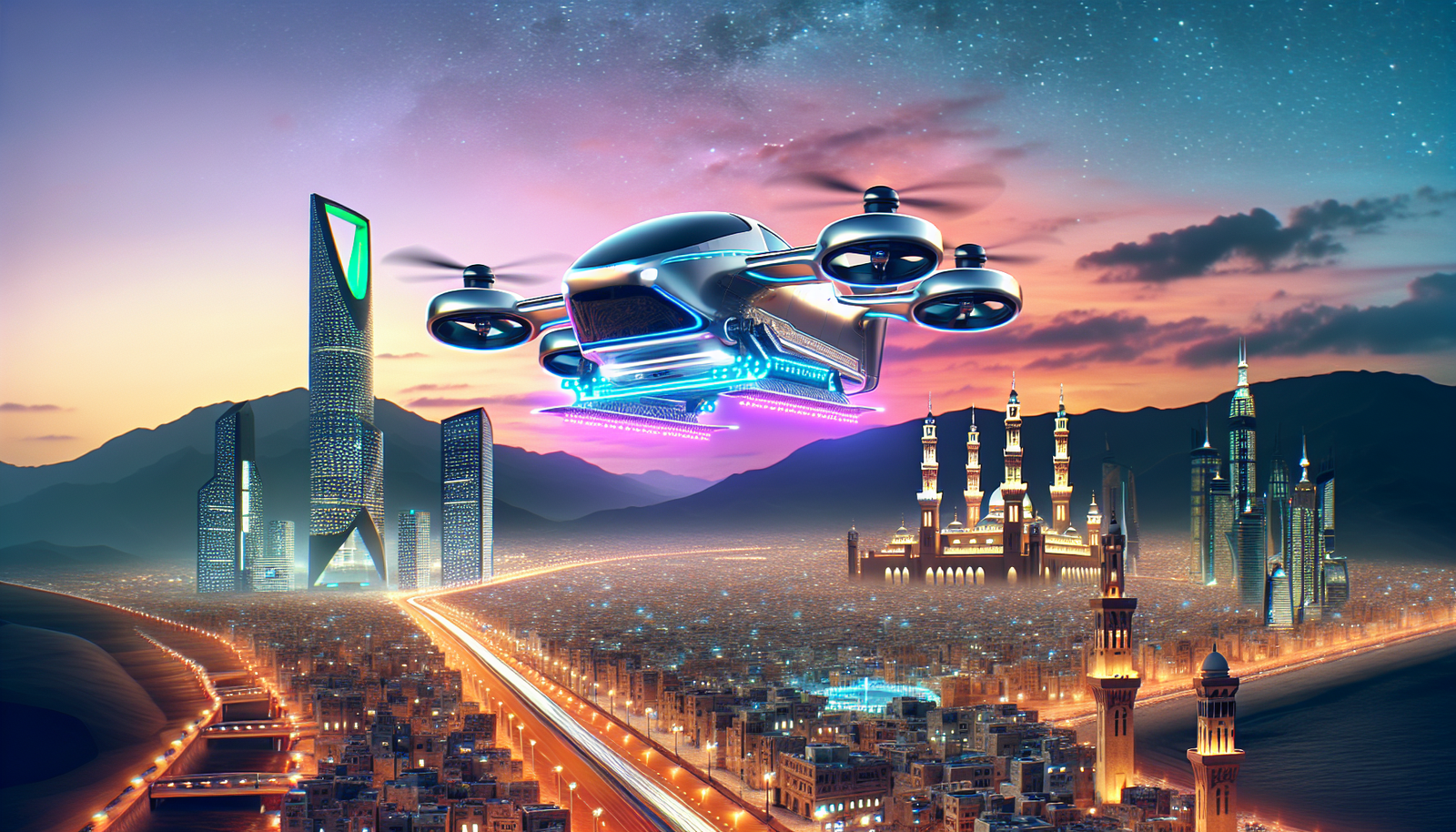Flying Taxi Service from Jeddah to Makkah: A New Era of Travel
The introduction of flying taxi services marks a groundbreaking moment in the annals of transportation, particularly with the planned route from Jeddah to Makkah. This new venture not only encapsulates the marvels of modern technology but also embodies a significant leap towards transforming urban mobility. As these aerial vehicles prepare to bridge the gap between two of Saudi Arabia’s most pivotal cities, they promise to inaugurate a new era of travel, blending efficiency, speed, and environmental consciousness.
Revolutionizing Pilgrimage and Urban Transport
Every year, millions of Muslims from across the globe travel to Makkah for Hajj and Umrah, making it one of the world’s largest gatherings of people. The current road route from Jeddah, where the nearest international airport is located, to Makkah often faces heavy traffic, especially during the pilgrimage season. The introduction of flying taxis aims to alleviate this congestion, dramatically reducing travel time and enhancing the overall experience of pilgrims.
Beyond the religious journey, the flying taxi service is poised to revolutionize urban transportation within Saudi Arabia. By enabling swift, direct routes over urban landscapes, these taxis promise to redefine notions of urban mobility, reducing reliance on traditional, congested ground transportation networks.
Features of the Flying Taxi Service
The flying taxis, often referred to as eVTOLs (electric Vertical Take-Off and Landing vehicles), are designed with cutting-edge technology to offer a seamless and efficient travel experience. Equipped with electric propulsion systems, these vehicles stand at the forefront of eco-friendly transport solutions, producing zero emissions and significantly reducing the environmental impact commonly associated with traditional combustion engines.
These aerial taxis are expected to carry passengers directly between Jeddah and Makkah in a fraction of the time it would take by road, with precise landing zones located near key destinations and transport hubs to ensure convenience for all travelers. Advanced reservation systems and competitive pricing are anticipated to make this service an attractive option for both residents and visitors alike.
Challenges and Future Prospects
Despite the excitement surrounding the launch of the flying taxi service, it faces its set of challenges, including regulatory approvals, safety concerns, and public acceptance. Ensuring the reliability and safety of these novel vehicles is paramount, requiring extensive testing and certification processes. Moreover, integrating this new mode of transport into the existing urban infrastructure while maintaining harmony with traditional transportation modes presents a complex challenge that must be navigated carefully.
Yet, the potential benefits of the flying taxi service from Jeddah to Makkah are immense. By offering an alternative to congested ground transport, this service not only stands to improve the travel experience for millions of pilgrims but also signifies a broader shift towards sustainable and innovative urban mobility solutions. As the project moves from concept to reality, it could very well set a precedent for other cities worldwide, ushering in an era where the sky is no longer the limit for urban transportation.
The launch of the flying taxi service from Jeddah to Makkah is more than just a novel convenience; it is a testament to human ingenuity and the relentless pursuit of progress. As we stand on the cusp of this new era of travel, the implications for the future of urban mobility and environmental sustainability are profound, promising a future where distance is no longer a barrier to connectivity.
